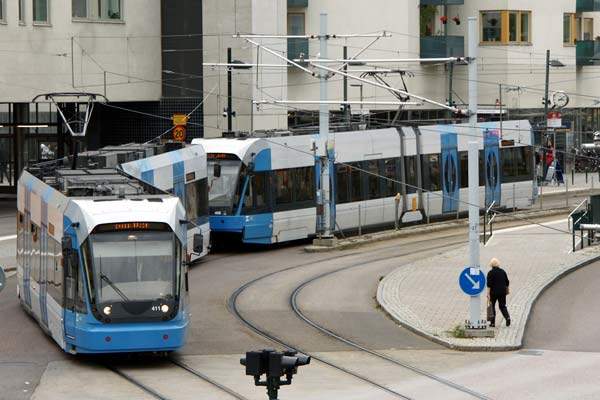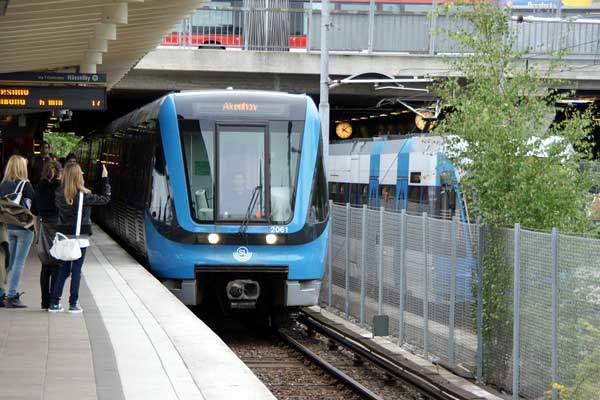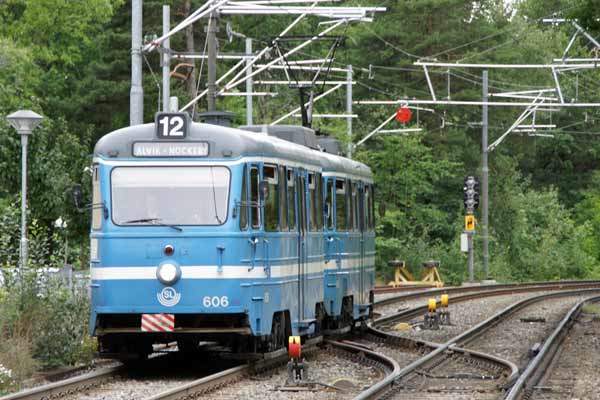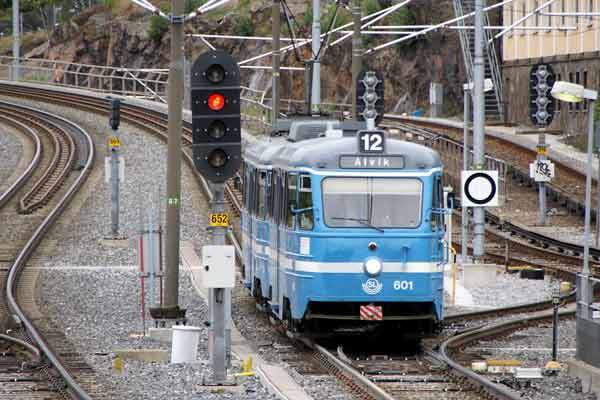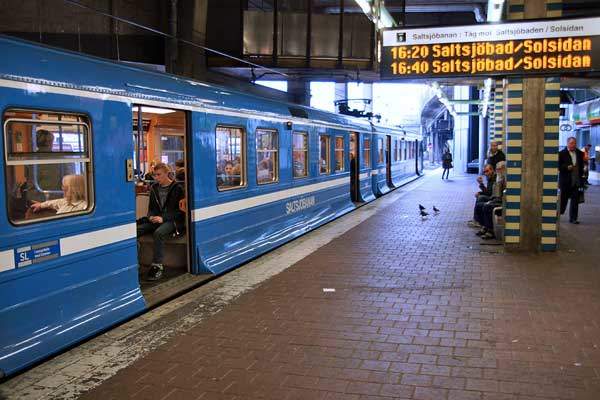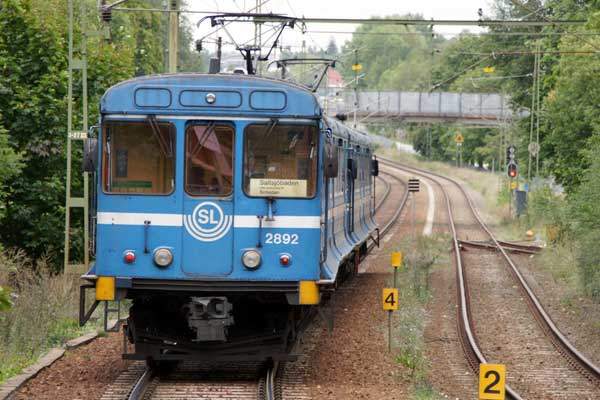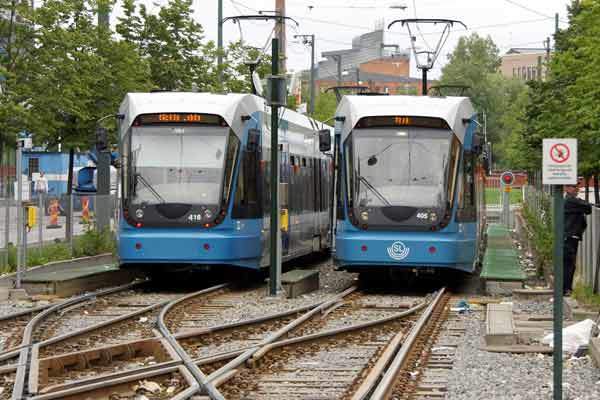In addition to suburban rail (Pendeltåg) run by Stockholmståg, Stockholm has several other local rail operations. The former is a subsidiary of national train operator SJ and the city’s metro (Tunnelbana). Although with integrated ticketing arrangements, this diverse collection displays technical variations and is subject to varying degrees of future development to improve public transport coverage.
The metropolitan area accommodates around 1.75 million people, over a fifth of Sweden’s population. It covers a site fragmented by many sea inlets that calls for multiple crossings between the main 14 islands, a feature that exacerbates the problem of road congestion and related pollution.
The project
Public transport authority for the metropolitan area AB Storstockholms Lokaltrafik (SL) is owned by Stockholm County.
Assorted modes provide 2.4 million daily passenger journeys, a number growing in reflection of a 20,000 annual population increase in the county, especially marked in the suburbs.
Along with the metro, the Saltsjöbanan, Lidingöbanan, Tvärbanan and Nockebybanan are operated by Veolia Environnement subsidiary Connex Tunnelbanan. In place since 1999, SL’s contract with Connex has been extended to 2009.
In line with many other cities, Stockholm is pursuing a policy of increasing rail-based public transport capacity. Less common is their reinstatement, modernisation and expansion of lines previously abandoned or filling minor roles.
Infrastructure
Not part of the long-range SL Pendeltåg, the Saltsjöbanan is a free-standing suburban rail line with a cramped city terminus at the quayside Slussen bus and metro Green Line interchange.
With a total 18.5km (11.6 mile) length, the 18-station 1,435mm overhead electrified system which forks at the eastern end came under the Stockholm authority in 1969. The present operation does not allow for frequent services, although demand would justify greater capacity.
A survivor of Stockholm’s earlier tramway system that was truncated by metro expansion, the Nockebybanan serves some western suburbs. With investment to modernise the infrastructure, the ten-stop line feeds interchanges at Alvik, cross-platform with the metro Green Line (the system’s busiest) and at a lower level with the Tvärbanan.
A similar role in the north of Stockholm is filled by the Lidingöbanan, another truncated tramway survivor that has an interchange at the metro Red Line terminus, Ropsten.
The only line of modern origins is the 11.5km (7.2 mile) Tvärbanan, which follows a largely surface-running southern arc from Alvik to Sickla udde in the east. A high-investment project with several high-level crossings between islands and mostly running on reserved tracks, there are some street crossings and a short section shared with heavy rail east of the heavily used Liljeholmen stop.
Opened in sections between 2000 and 2002, the double-track line has multiple interchanges with other modes. This reduces the need for travel via the concentration of central metro interchanges. Each on different islands, these are Slussen, Gamla stan and T-Centralen, the latter being part of the country’s main bus, heavy rail national and suburban interchange clustered around Stockholm Central Station.
Rolling stock
The modern light rail fleet is represented by 31 Adtranz A32/Bombardier Flexity Swift trams assembled in Sweden at Västerås and delivered from 1999. The main application of these part low-floor vehicles is running the frequent Tvärbanan services, usually in pairs. They also share duties with much older vehicles on the Nockebybanan.
Their introduction and the easy access on Tvärbanan have furthered the case for additional light rail in Stockholm. The other lines use a range of older stock, much of which would be withdrawn with further commitment to light rail. In 2007 an Alstom Citadis was tested on the Lidingöbanan.
Signalling and communications
The various lines use different control systems. The Nockebybanan and Tvärbanan have a connection allowing for use of a common depot and control at Alvik. All lines are designated within the Storstockholms Lokaltrafik numbering regime and their ticketing system that allows for cross-mode interchanges.
The future
Due for completion by 2011, the highly successful Tvärbanan is to be extended at both ends; from Alvik to Solna and from Sickla udde to an interconnection with the Saltsjöbanan.
This line will gain light rail operations and passengers will gain by access to orbital journeys across the south of Stockholm, also off-setting the demand at the congested Slussen interchange.
In August 2008 SL announced that it was proceeding with plans to return the currently 2.9km Djurgårdslinjen to normal service from its present condition as a seasonal operation as a heritage line.
Adding a northern branch to Ropsten, the much modified Djurgårdslinjen will return trams to central Stockholm on a westward extension from Norrmalmstorg to serve the interchange at Central Station and onwards to the Lindhagen residential district on Kungsholmen.
SL is inviting interest for the construction, operation and maintenance of the new service covering at least 15 years. Tenders are required by April 2009 for a projected contract award that autumn.
It is envisaged that services will start, possibly in stages, from the second half of 2011. These expansions will lead to substantial rolling stock acquisitions.

